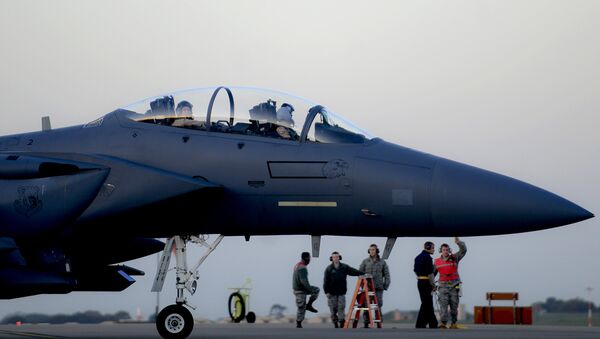"Today, we have just 55 combat-coded fighter squadrons, approximately 660,000 Total Force Airmen, and less than 50 percent of our Air Force is ready for full-spectrum operations – a 30 percent reduction since Operation Desert Storm," he said in his written testimony, referring to America's 1991 war against Iraq following Baghdad's annexation of Kuwait.
Full-spectrum readiness, according to Goldfein, refers to the needed number of trained and equipped servicemen, who are capable of completing mission in "contested and uncontested environments."
"Our strategic capability advantage over competitors is shrinking, and our ability to project strategic deterrence is being challenged," the general lamented. The Pentagon views Russia and China as the two countries that are capable of rapidly upgrading their forces and thus pose a threat to the US.
In addition, Russia's successful military campaign in Syria, which has also been used to showcase some of the best and newest weapons in Moscow's arsenal, has hardly gone unnoticed. The Sukhoi Su-34 made its combat debut in the Arab Republic. Russia also sent its strategic bombers, the Tupolev Tu-160 and Tu-95, into battle.
"Air forces who don't modernize eventually fail," defense expert Dave Majumdar quoted Goldfein as warning. "And when the air force fails, the Joint Team fails."


